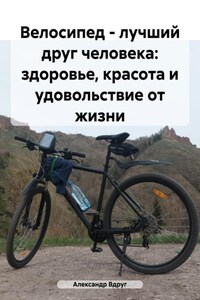William Collins
An imprint of HarperCollinsPublishers
1 London Bridge Street
London SE1 9GF
WilliamCollinsBooks.com
This eBook first published in Great Britain by William Collins in 2018
Text © Graham Hoyland 2018
Photographs © Individual copyright holders
Cover fur © Photoshop
Jacket design by Jack Smyth
Graham Hoyland asserts the moral right to be identified as the author of this work.
A catalogue record for this book is available from the British Library.
All rights reserved under International and Pan-American Copyright Conventions. By payment of the required fees, you have been granted the non-exclusive, non-transferable right to access and read the text of this e-book on-screen. No part of this text may be reproduced, transmitted, down-loaded, decompiled, reverse engineered, or stored in or introduced into any information storage and retrieval system, in any form or by any means, whether electronic or mechanical, now known or hereinafter invented, without the express written permission of HarperCollins.
Source ISBN: 9780008279493
Ebook Edition © May 2018 ISBN: 9780008279516
Version: 2018-04-27
The footprints in the snow were large, bigger than a human’s, with clearly defined toes. There was no sign of claw-marks. These prints looked as though they had been made only minutes before we arrived. I shivered and glanced around the deserted valley. We were the first Westerners ever to see this place, and we really hadn’t meant to come here.
Our expedition was in trouble. We had been trying to reach Gangkar Punsum, the world’s highest unclimbed mountain. This lies on the Tibetan border in Bhutan, the Himalayan kingdom to the east of Kathmandu which is rarely visited by Westerners. The weather had been the worst in living memory, with rain or snow on every single day since leaving Thimpu, the capital. On day three, our packhorses were attacked by wild bees, and then our leader had suffered a back injury and was now lying in a crude shelter in the jungle four days behind, tended by our doctor. Our problem was that the high pass we had just crossed was now closed to our yaks by heavy snow. We couldn’t retreat that way, and the passes towards the mountain were closed too. We were trapped, and the 25 yaks only carried supplies for three weeks. We had to get out before winter set in. As the five remaining Westerners, we could have attempted to re-cross the pass, leaving the yaks behind, but as acting leader I was unhappy about splitting the party even further. We had to stay with our tents and food. We also had a whole yak-herder family with us, including a young mother nursing an 8-month-old baby, so it was clear that we had to sink or swim together.
I asked our yak-herder Namgay Tsering for advice, and it was then that he told me of a lost valley that might provide a route back to civilisation, with two higher but easier passes that the yaks could just about manage in the snowy conditions. So the next morning we set off, guided by Pem Dem, the 20-year-old mother, with her baby Thinley. The yaks were being gathered up and loaded and would follow up behind us. After a few hours, we walked up into the Lost Valley and Pem Dem sat down in the swirling snow to breastfeed her baby. It was only then that I noticed the solitary yak standing in the snow a few yards away. It seemed distressed. These animals are sometimes abandoned by the yak-herders when they are too old to carry heavy loads. This poor creature bellowed when it scented our baggage yaks coming up the valley behind. The significance of this animal was soon to be revealed.
Mother Pem Dem and son Thinley: the witnesses.
After feeding her baby, Pem Dem slung him onto her back again and we set off towards the Wangchum La pass at the head of the valley. We were all anxious about tackling this: at 16,400 feet it was the highest we had climbed so far, some 650 feet higher than Mont Blanc. It had never before been seen or crossed by Westerners. A few minutes later, just as the first bunch of baggage yaks stampeded past us, I spotted Sonam, our deaf-mute kitchen boy, pointing at the snow to the left of our path.
There they were: two footprints, spaced quite far apart, larger than human size. The left one was very clear, and my flesh crawled as I saw how the toes had curled into the snow for grip. The prints were larger than my own size-ten feet. My mind raced. I had to record this evidence and establish its authenticity in around twenty minutes. Any longer and I would be endangering our party. While I filmed the footprints and took a snow sample, Predrag Jovanovic, our resident particle physicist, scouted ahead and behind the prints, which crossed our path at right angles, away from the solitary yak. He reported that in one direction the baggage yaks had obliterated all traces, and in the other our own footprints had done the same.








